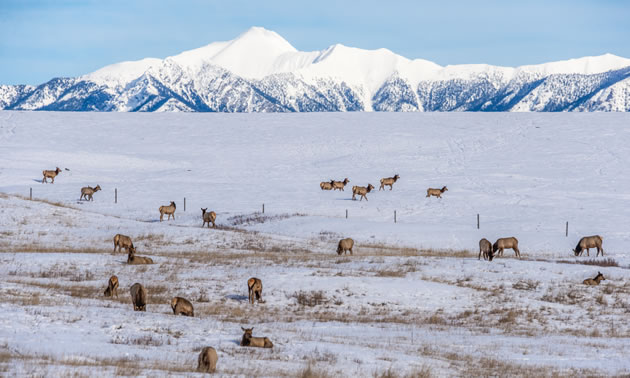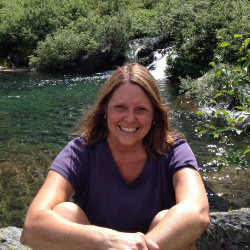An elk-filled essay for Earth Day
The Kootenays are a special place to live for many

Elk graze and rest in the Wycliffe area with the Rocky Mountains in the background earlier this spring. — Lyle Grisedale photo
I was driving to work today on Highway 93/95, heading south and already past Wasa. A herd of about 20 cow elk were just off the edge of the highway on Bummers Flats, a wildlife conservation area beside the Kootenay River.
The elk were not grazing—their heads were high, they were in a tight group, and two were out front watching the cars and waiting to lead the herd across the highway.
I slowed way down and got by them safely—they are big animals that you don’t want to collide with. They can weigh 500 to 700 pounds and stand five feet at the shoulder.
A few vehicles were approaching me in the distance, so as I got near each one in turn, I flashed them with my high beams to let them know that danger lurked ahead. Looking in my rear-view mirror, I saw the brake lights come on as they came upon the herd.
The drivers that I pass each morning have some spectacular views as they commute to work each day. Here at Kootenay Business magazine, we repeatedly hear people say they moved here for the special Kootenay lifestyle and the beauty of the area, including the mountains, the waterways and the wildlife. Employers tell us that they started or moved their businesses here for the same reasons.
The elk were just doing their morning commute, too. They had probably gone to the river for a drink and grazed on the open grasslands of Bummers Flats. Elk do most of their feeding mornings and evenings. They seek sheltered areas in-between feedings to digest the grasses and forbs in their four-chambered stomachs. Thus, their morning commute takes them back to the shelter of the forest for the day.
With so much traffic on our highways, we make it harder for the elk and other animals to cross to safety.
On this Earth Day 2015, let’s be thankful for the beauty of our natural home and try to lessen our ecological footprints so we leave room for the elk and all the other species we share this precious planet with.






Comments